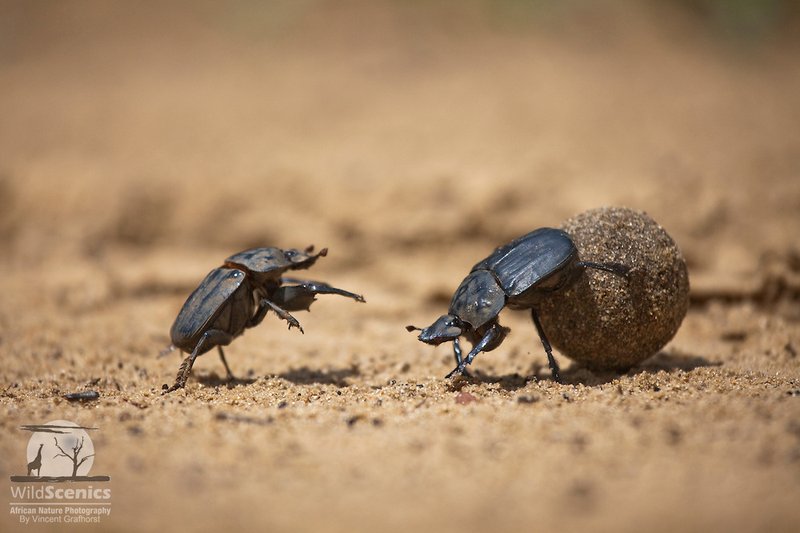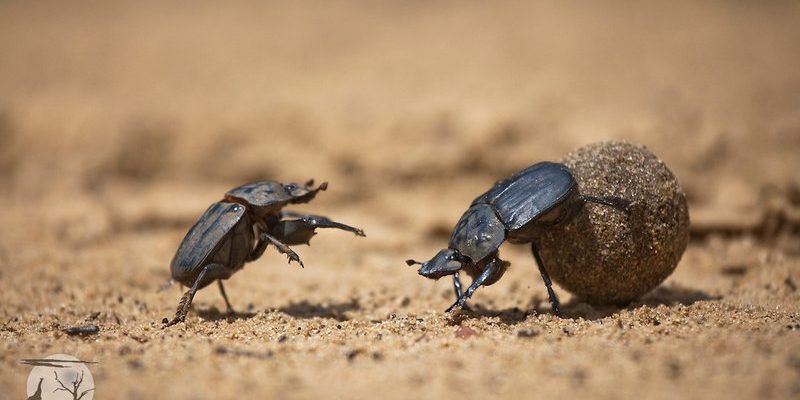
Imagine living in a world where your job is to clean up after bigger animals. This is essentially what dung beetles do. They feast on animal waste, helping to keep our environments clean. Even though they’re tough little critters, they have their fair share of enemies. From birds and mammals to environmental factors, dung beetles live in a world filled with hazards. In this article, we’ll explore the various **predators** and **threats to dung beetles**, understanding how they impact these essential insects and what we can do to help protect them.
Common Predators of Dung Beetles
When it comes to threats, dung beetles have quite a few natural predators. Birds, mammals, and even insects can be a danger to these humble creatures. Let’s dive into their most significant threats.
Birds: The Aerial Hunters
Birds are among the most common predators of dung beetles. Many birds, like starlings, magpies, and crows, have sharp eyes and keen instincts. They can spot a dung beetle from a distance and snatch it up before it has a chance to roll its precious dung ball away.
These birds are not just opportunistic feeders; they actively seek out dung beetles. The bright colors and movements of dung beetles can attract birds, making them an easy snack. To protect themselves, dung beetles often rely on camouflage and burying their dung quickly, but that doesn’t guarantee their safety.
Mammals: The Ground Predators
While birds rely on sight, many mammals depend on smell to locate dung beetles. Animals like rats, hedgehogs, and even certain species of bears are known to scavenge for dung beetles. These mammals often dig around in dung piles, searching for both the waste and the beetles hiding within. It’s a bit of a buffet for them!
To counteract this, some dung beetles have evolved behaviors to avoid detection. They might choose to work at night or in less trafficked areas. Still, the risk remains, especially as human urbanization continues to encroach on natural habitats.
Insectivorous Predators
It’s not just birds and mammals that pose a threat to dung beetles. Other insects are known to prey on them as well. This can include various species of ants, wasps, or even larger beetles that see dung beetles as a meal.
Ants: The Tiny Army
Ants are relentless hunters. Some ant species will raid dung beetle nests, especially when they’re in a vulnerable state. A group of ants can quickly overwhelm a single dung beetle, making these tiny insects formidable foes.
While some dung beetles may be quick and agile, the sheer number of ants can be daunting. Some beetles avoid areas with high ant populations, while others may defend their territory aggressively.
Other Beetles: The Competitive Predators
Interestingly, some beetles are predators by nature and will target dung beetles for food. These beetles can compete for resources, and in a world where every meal counts, this competition can be fierce. The interaction among various beetle species adds complexity to the lives of dung beetles.
Imagine trying to roll your lunch down a busy street only to have another hungry beetle try to steal it! That’s the reality dung beetles often face.
Environmental Threats to Dung Beetles
Beyond predation, dung beetles also face threats from their environment. Changes in habitat, climate, and human activity can have dire consequences for these important insects.
Habitat Loss: Urbanization and Agriculture
As cities expand and agricultural practices intensify, the natural habitats of dung beetles are disappearing. Fields, meadows, and forests—areas where dung beetles thrive—are being turned into urban landscapes or farmland. This loss of habitat means fewer places for dung beetles to find food and shelter.
When their homes disappear, dung beetles can struggle to survive. Some species may become endangered or even go extinct if they can’t adapt to the rapid changes in their environment.
Climate Change: The Temperature Tipping Point
Climate change is another factor that can affect dung beetles. These creatures thrive in specific temperature ranges, and changes in weather patterns can disrupt their life cycles.
For instance, warmer temperatures may lead to earlier breeding seasons, but if the food supply is affected by drought or heavy rains, fewer beetles may survive. Additionally, changing climates can shift the ranges of the animals they rely on for dung. If their food source migrates, dung beetles might find themselves in trouble.
Human Impact: Pollution and Pesticides
Humans have a significant impact on the environment. Pollution and the use of pesticides can also threaten dung beetles and their habitats.
Pesticides: The Silent Killers
The use of pesticides in agriculture can be deadly for dung beetles. While they try to do their job of recycling nutrients, they may become exposed to harmful chemicals. These substances can affect their health and reproduction, leading to population declines.
Farmers may not realize the impact their practices have on these essential insects, but it’s crucial to find a balance between pest control and protecting beneficial species like dung beetles.
Pollution: Contaminating Their World
High levels of **pollution** in the environment can disrupt the delicate balance that dung beetles thrive in. Contaminated environments can lead to death or reduced reproduction rates among dung beetle populations.
Moreover, pollution can alter the chemical composition of dung, making it less nutritious for dung beetles. When you consider that these insects depend on healthy dung to survive, it’s easy to see how harmful pollutants can create a chain reaction affecting entire ecosystems.
Conservation Efforts: Helping Dung Beetles Thrive
Now that we understand the threats dung beetles face, it’s heartening to know that several conservation efforts aim to protect them.
Creating Safe Habitats
One way to help dung beetles is through habitat restoration. By restoring natural areas, we can provide dung beetles with the clean, safe places they need to thrive. Community efforts, like planting native grasses or establishing wildlife corridors, can create sustainable environments for dung beetles.
You might be surprised at how simple actions—like creating a compost pile in your backyard—can help support these tiny heroes of the ecosystem.
Educating the Public
Another essential aspect of conservation is education. Raising awareness about the importance of dung beetles and the threats they face can help inspire action. When people understand why dung beetles are vital, they may be more inclined to support policies or practices that protect them.
Programs in schools, community events, or even social media campaigns can significantly increase awareness and foster a sense of responsibility for preserving our natural world.
Dung beetles are remarkable insects that play a critical role in our ecosystems. Their challenges from predators and environmental changes can seem daunting, but they also remind us of the intricate balance of nature. By understanding and addressing these threats, we can contribute to their survival.
Whether it’s by reducing pesticide use, restoring habitats, or simply educating others about these unsung heroes, we all have a part to play. Dung beetles may be small, but their impact is mighty. Let’s work together to ensure they continue rolling their dung balls through our landscapes for generations to come.

